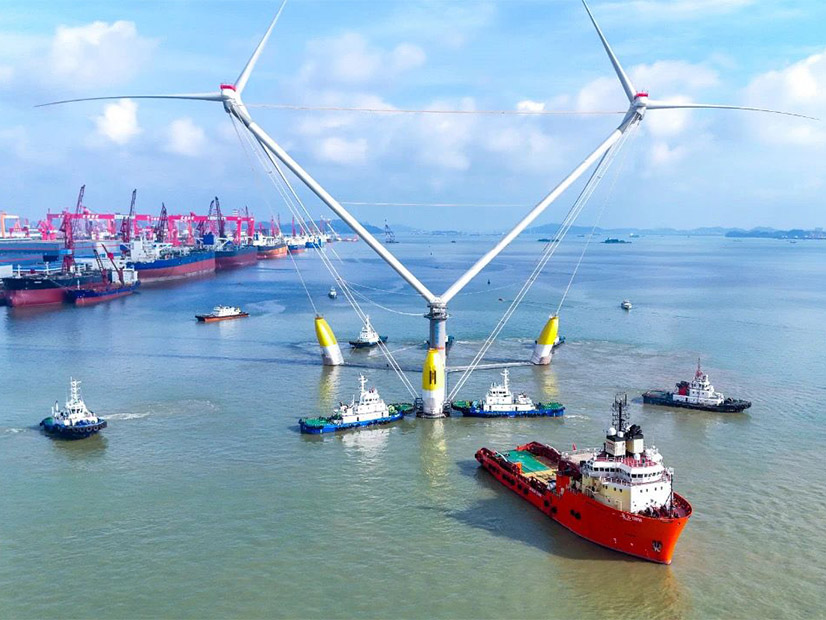
The world is on track to expand its renewable energy capacity 2.7 times by 2030, the International Energy Agency reports.
That is enough to outpace the national goals of many countries but not quite enough to meet the target established at the COP28 climate summit: tripling the capacity by 2030. However, the IEA said, tripling still is possible with bold near-term action by governments.
In “Renewables 2024,” its flagship annual report released Oct. 9, IEA projects more than 5,500 GW of new capacity coming online by 2030.
Photovoltaic panels and wind turbines account for the vast majority: 80% and 15%, respectively.
Hydropower capacity growth is expected to remain stable while renewables such as bioenergy, geothermal, concentrated solar and ocean energy are expected to decline without greater policy support.
IEA attributes the growth to climate and energy security policies in nearly 140 countries that, combined with favorable economics, have made renewables cost-competitive with fossil-fired generation and fostered new demand from the private sector.
The report projects that nearly 70 countries accounting for 80% of global generation capacity are on track to reach or exceed their 2030 goals.
China is the standout among them, expected to account for 60% of the global expansion through 2030 thanks to its comprehensive support for utility-scale and distributed generation across all renewable technologies.
In all, renewables would account for nearly half of global electricity generation by 2030.
Potential stumbling blocks include high cost of capital in developing economies, weak grid infrastructure, inadequate auction visibility, unstable policy environments and curtailment of installed resources due to lagging grid investments and system integration.
Also, at least 1,650 GW of renewable capacity in advanced stages of development is waiting for grid connection worldwide; some early-stage projects are dropping out of the queue due to lack of progress.
And kinks remain in the supply chain: Record-low prices, a supply glut and manufacturing overcapacity exist for the solar industry, while the wind turbine sector is crimped by limited investment in new capacity.
Finally, beyond power generation, fossil fuel demand continues to grow in the transport, industry and buildings sectors, the report states; almost 80% of total energy demand worldwide still will be met by fossil fuels in 2030, down from 87% in 2023.
In the news release, IEA Executive Director Fatih Birol said:
“Renewables are moving faster than national governments can set targets for. This is mainly driven not just by efforts to lower emissions or boost energy security — it’s increasingly because renewables today offer the cheapest option to add new power plants in almost all countries around the world.
“This report shows that the growth of renewables, especially solar, will transform electricity systems across the globe this decade. Between now and 2030, the world is on course to add more than 5,500 gigawatts of renewable power capacity — roughly equal [to] the current power capacity of China, the [EU], India and the United States combined. By 2030, we expect renewables to be meeting half of global electricity demand.”


